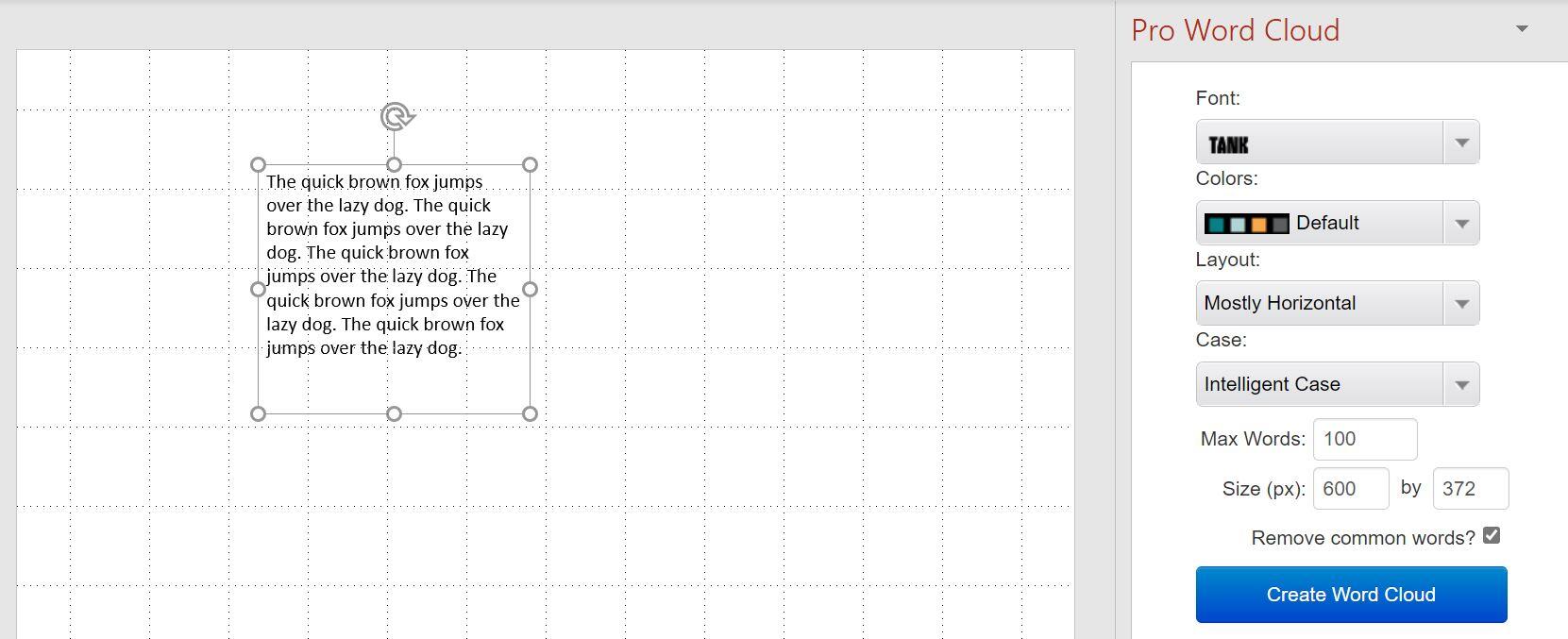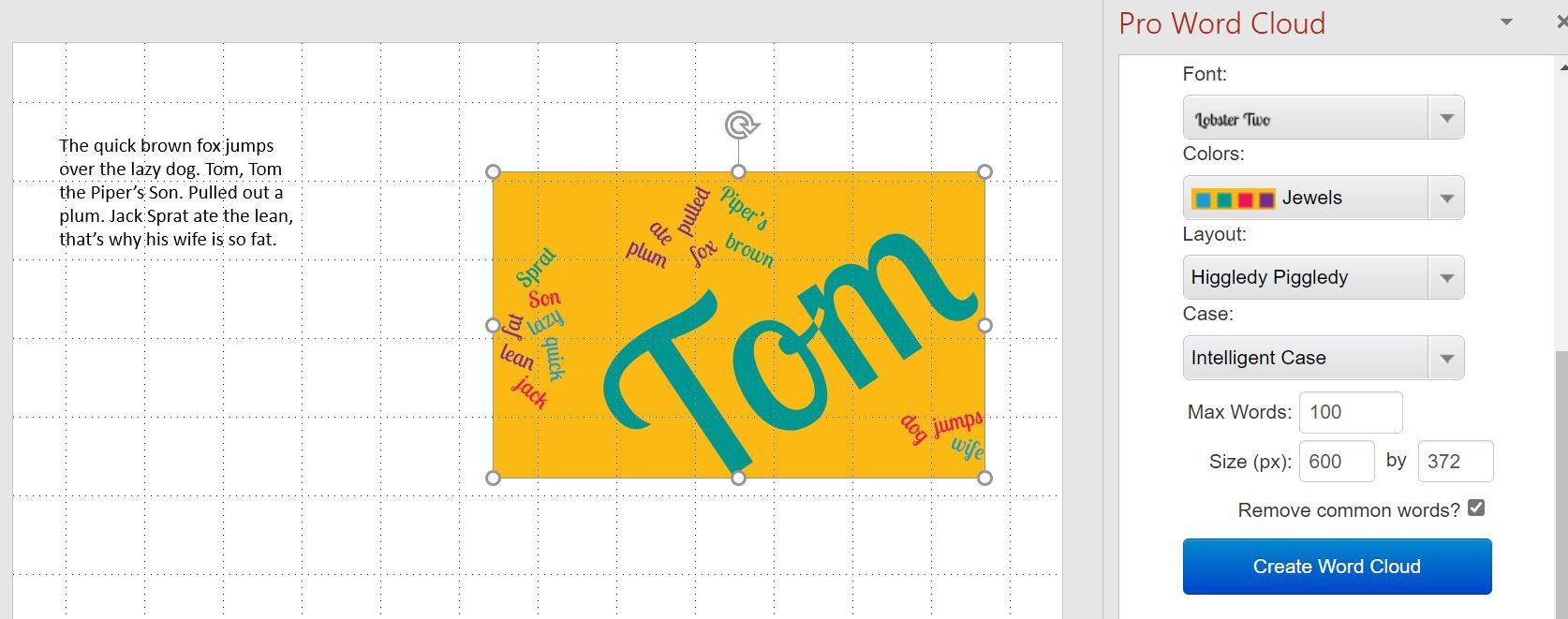Learn how to create a quick word cloud to add a bit of fun to a presentation or use in serious business applications.

Image: rafal_olechowski/iStock/Getty Images Plus
A word cloud is an image of a cluster of words in different sizes, colors and orientation. The more often a word occurs in the source text, the larger—therefore, more important—the word appears. You can use them as images in your presentation, but there are technical uses as well. For instance, if you’re an editor or author of business text, you might create a word cloud to see which terms are overused or to make sure the focus isn’t overrun. You could even use them as an SEO tool. In this article, I’ll show you an add-in that produces word clouds in PowerPoint, but you can copy those images anywhere you like.
I’m using Microsoft 365 on a Windows 10 64-bit system. You can work with your own file, or download the demonstration .pptx file. This article assumes you have basic PowerPoint skills, but even a beginner should be able to follow along.
SEE: TechRepublic Premium editorial calendar: IT policies, checklists, toolkits, and research for download (TechRepublic Premium)
How to install the add-in
As a rule, I don’t deviate from Microsoft 365’s built-in features, but add-ins from the Microsoft Store are an exception to the rule. In this case, the Pro Word Cloud add-in supplies quick results for a neat effect that would take much longer to replicate with built-in features. I’m always an advocate for saving time.
To install this add-in, open PowerPoint. On the Insert tab, click the My Add-Ins dropdown to make sure you don’t already have this product, and just don’t realize it. If you don’t, click Get Add-Ins in the Add-Ins group to open the Microsoft Store. In the Search tool (top-left) enter Pro Word Cloud. It should be the first item in the resulting list. Click Add, agree to the terms of use, click Continue and then allow a moment for your system to install the add-in.
At this point, it’s worth noting that this add-in is freeware, which means it’s free, but usually there’s some way to donate to the author. Freeware can include bloatware and even more malicious files. If your system or app suddenly slows down after installing freeware or starts acting up, uninstall the freeware. Doing so may or may not help, but try. Microsoft Store products should be safe.
In this case, Pro Word Cloud works by sending data over the internet. While many users won’t be concerned by that, you should know how the product works. This product may not be the right solution for you. If it is, then let’s look at a quick example.
How to create a word cloud
After installing the Pro Word Cloud add-in, you can use it right away. First, enter text—as many or as few words as you need. The more words, the larger and more interesting the cloud will be. We’ll use the short paragraph (Figure A). To generate the text, insert a text box, and then enter =RAND() and click Enter to produce miscellaneous text. If you get more than one paragraph, you can delete all but one or leave them all.
Once you have text to work with, do the following to create the word cloud:
- Select the text box that contains the source data.
- Click the Insert Tab.
- In the Add-Ins group, click the dropdown for My Add-Ins to display the add-in tools (Figure A).
- For this example, click Create Word Cloud, accepting the default settings to produce a quick word cloud (Figure B).
Figure A
” data-credit>
Launch Pro Word Cloud.
Don’t worry if yours doesn’t look like mine—that’s the nature of the product.
Figure B
” data-credit>
The default settings produced this word cloud.
Pro Word Cloud doesn’t automatically insert the word cloud. Instead, click the default word cloud in the Pro Word Cloud pane to copy it to the Clipboard. Then, press Ctrl+v to copy it into the current slide (Figure C). Drag and drop to position and resize if necessary. Or drag it right from the pane.
Figure C
” data-credit>
The default word cloud.
How to use the tools
The default word cloud may be suitable, or not. Fortunately, the tools allow you to customize the cloud quite a bit before you generate it. You can’t do much to an existing word cloud, like the one in Figure C, other than apply a few PowerPoint formats, such as a shadow, glow, reflection and so on—the results are iffy.
The easiest way to get a different word cloud is to click Re-Generate Word Cloud. Doing so will randomly adjust the different properties. Clicking a few times may produce one you like.
If you want more control, use the tools: Font, Colors, Layout and Case. These are self-explanatory and the best way to learn about them is to explore them when you have time. You can also restrict the number of words, specify the size of the word cloud and include common words—and, if, or, the and so on.
Figure D shows the results of the current settings in the pane. Your settings should, when possible, reflect the word cloud’s theme. It won’t always matter, but be in tune with your message and the results. Our second word cloud does reflect a bit more merriment than the first word cloud’s settings.
Figure D
” data-credit>
This word cloud is a bit cheerier.
A word about repetition
There’s one last thing to consider: did you notice in the first example, that even though the sentence repeats several times, the word cloud displays each word only once? Also, did you notice that the word Tom is bigger than the others in the second?
In general, the more often a word occurs, the larger it will appear—rather than being repeated. However, if all the words are repeated, such as first example, all the words end up large. You’ll want to make sure that the larger words are the most prominent, and you might have to force that by altering the source text. Surprises are a big part of the word cloud adventure.
Used in a business application, this behavior can help you sort out keyword imbalances. Spend some time exploring, and although you will find limitations, chances are great that you’ll produce something you like.





